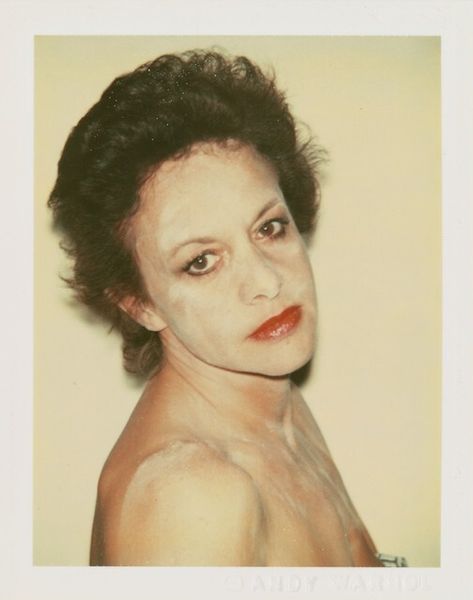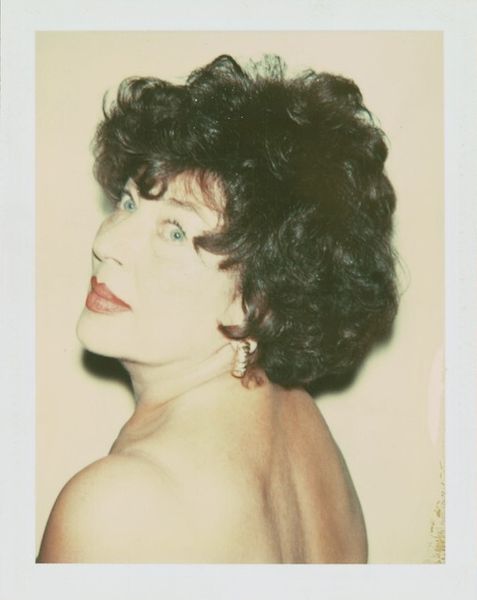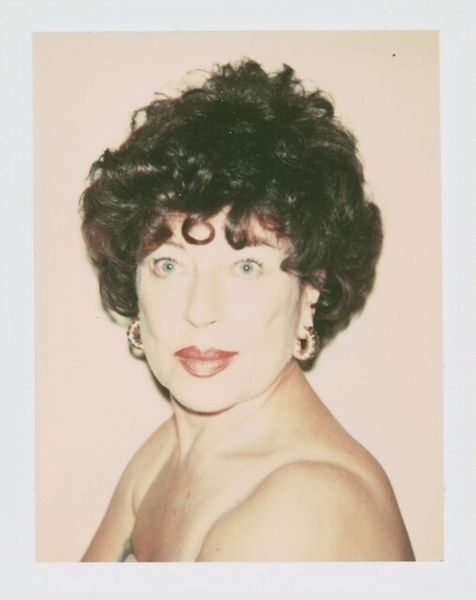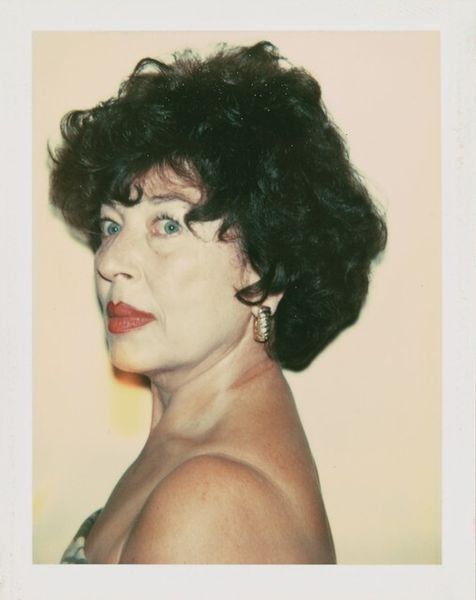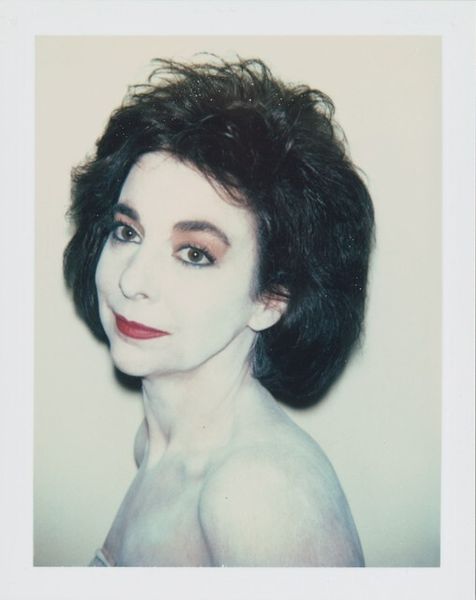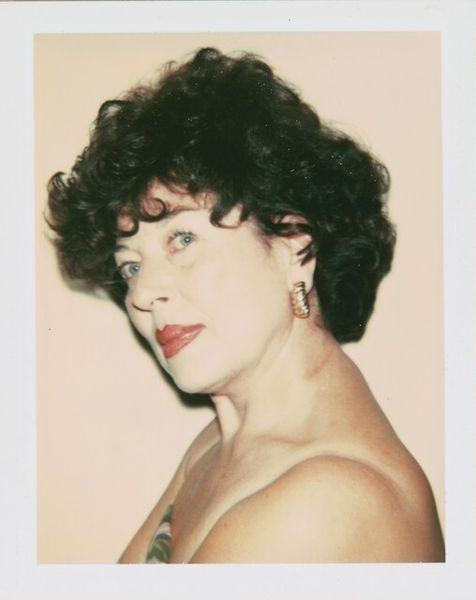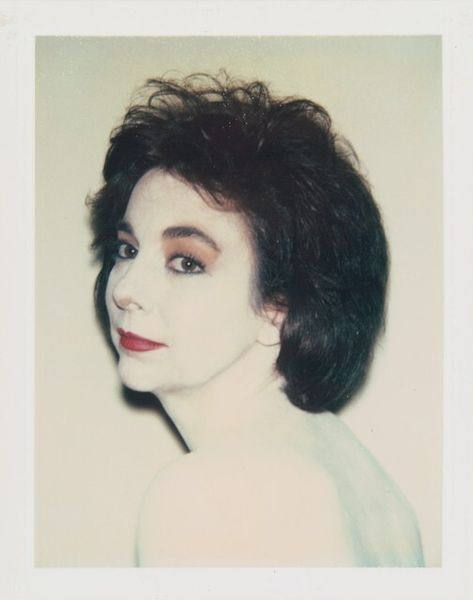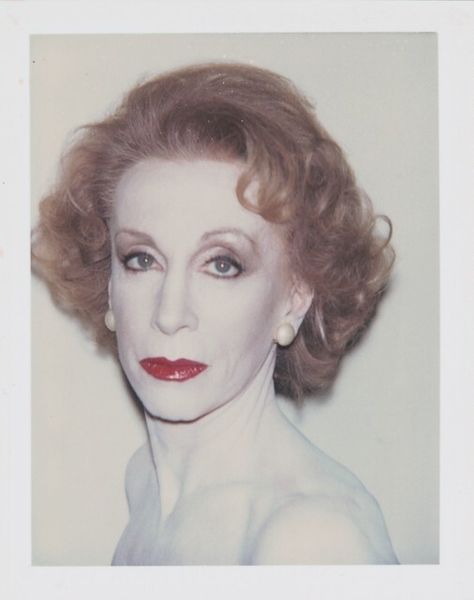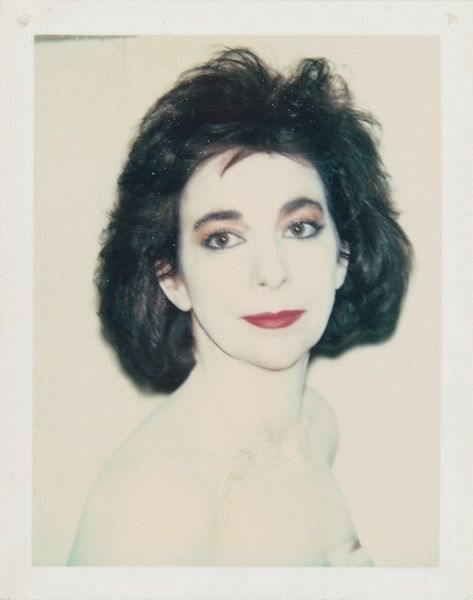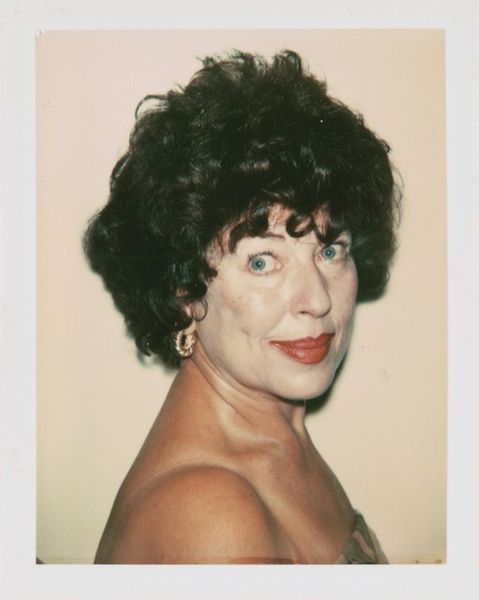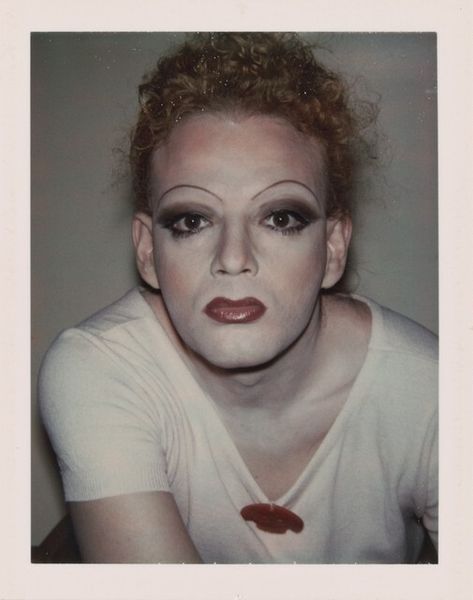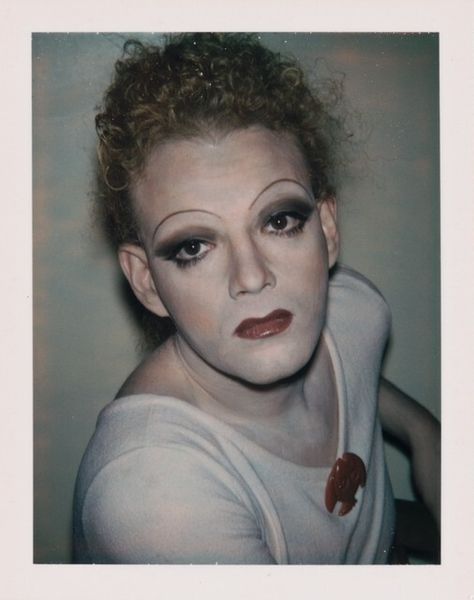
Dimensions: image: 9.5 × 7.3 cm (3 3/4 × 2 7/8 in.) sheet: 10.8 × 8.6 cm (4 1/4 × 3 3/8 in.)
Copyright: National Gallery of Art: CC0 1.0
Curator: Andy Warhol's polaroid print, "Susanne Stahel," made in 1980 presents a fascinating portrait within the artist's larger exploration of celebrity and image construction. Editor: My immediate impression is one of starkness. The contrast between the red lips and the powdery pallor is striking, almost theatrical. And the stark white background intensifies this effect. Curator: Indeed, the application of the powder carries layered symbolism. Consider the rituals of the theater, or historical European portraiture where such whitening evoked status and idealization. But within Warhol's Pop Art context, doesn't it also mimic the layers of artifice used to create a celebrity's persona? Editor: The semiotics here are undeniably rich. That single splash of color interrupts the monotone background to keep the face interesting and is further exaggerated by the low definition and over exposure that Warhol favored with his Polaroids, stripping away the expectation of depth that defined painting as far back as the Renaissance. The subject emerges as two-dimensional: a flattened surface rather than a form that recedes into space. Curator: Exactly. The use of the polaroid, and what appears to be a photomontage, speaks volumes too. Its immediacy allows for a sense of spontaneity, a perceived glimpse behind the constructed facade. The image simultaneously reveals and obscures something about Stahel. Editor: And the flatness becomes a kind of commentary, doesn’t it? The image itself seems to resist conveying deep inner psychology, reducing the person to just the facade. Do you feel this aesthetic of flat representation ties back into questions of the surface of consumerism that Warhol often confronted in his work? Curator: Certainly. Within Warhol's artistic project, surfaces become the terrain of meaning. What appears shallow invites the viewer to probe the values our culture assigns to superficial appearances. By adopting classical forms to portray that pursuit of appearances, Stahel as a piece creates tension and also acts as a vehicle for conveying meaning and exploring continuity. Editor: A brilliant fusion of aesthetic tension and pop awareness. I was held by the surface, while it invited to go a bit further than the mere composition and its stark immediacy.
Comments
No comments
Be the first to comment and join the conversation on the ultimate creative platform.
